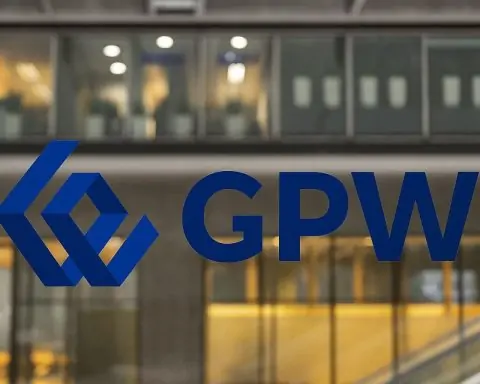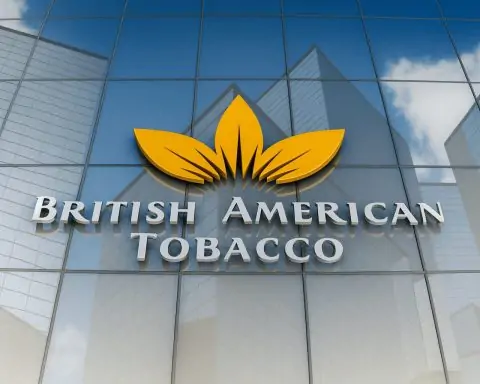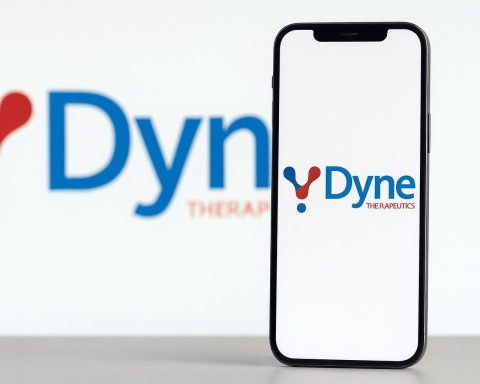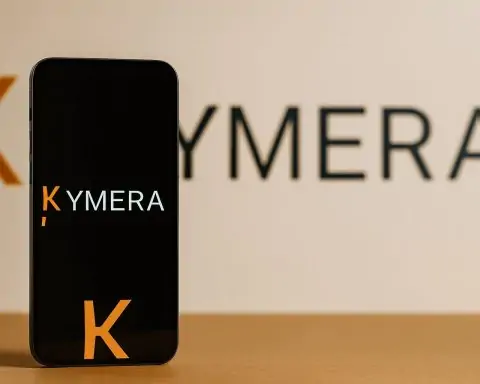Scientific Breakthroughs & Discoveries (Aug 7–8, 2025)
- “Fast-Forward” Protein Evolution: Scripps Research unveiled a synthetic biology platform called T7-ORACLE that speeds up directed evolution of proteins inside living cells [1]. Described in Science on Aug 7, this “evolution engine” mutates target genes at 100,000× the normal rate without harming host cells, allowing scientists to evolve therapeutic proteins in days instead of months [2] [3]. “This is like giving evolution a fast-forward button,” said Scripps CEO Pete Schultz, noting its potential to rapidly create new antibodies, enzymes or drug-resistant proteins for disease research [4].
- New Hope for Alzheimer’s – Lithium Study: In a groundbreaking Harvard study published in Nature, researchers found that the trace element lithium can slow or reverse brain aging linked to Alzheimer’s [5]. The team discovered lithium is uniquely depleted in the brains of early Alzheimer’s patients and showed that feeding tiny doses to lithium-deficient mice restored their memory [6]. “It seems to somehow turn back the clock,” said senior author Dr. Bruce Yankner of Harvard, as the work suggests low-dose lithium could become a novel therapy to bolster brain resilience against dementia [7].
- Hybrid Imaging to Spot Disease:UC Davis scientists, backed by a new $2.5 million NIH grant, are developing a hybrid PET/dual-energy CT scan that could dramatically improve detection of cancer, bone disease, and heart disease [8]. The “PET-enabled Dual-Energy CT” method combines metabolic PET data with advanced CT imaging to show not just where abnormal activity is, but what tissues are made of, without additional radiation or new hardware [9] [10]. “This is a major step forward,” said UC Davis radiology professor Guobao Wang, noting the technique provides a much clearer, composition-rich picture of tumors and tissues using existing scanners [11].
Regulatory Updates (FDA and Other Agencies)
- FDA Launches “PreCheck” for U.S. Drug Manufacturing: The FDA announced a new “FDA PreCheck” program to strengthen the domestic pharmaceutical supply chain by streamlining approval of U.S.-based manufacturing facilities [12]. Citing the national security risk of overreliance on foreign API production (only ~11% of API manufacturers are in the US) [13], FDA Commissioner Dr. Marty Makary said PreCheck will help “ensure Americans have a resilient, strong domestic drug supply.” The program, created under a 2024 executive order, offers a two-phase, faster review process – early guidance during plant construction and expedited application review – to encourage companies to build drug factories in the U.S. [14] [15].
- Gene Therapy Faces Safety Label Warning: U.S. regulators imposed strict new labeling and usage limits on Skysona (elivaldogene autotemcel) – a Bluebird Bio gene therapy for cerebral adrenoleukodystrophy (CALD) – after more cases of cancer were seen in patients. Initially approved in 2022 with a 4% (3/67) incidence of hematologic malignancy, Skysona’s trials have now reported 15% (10/67) of patients developing serious blood cancers like MDS or leukemia [16] [17]. On Aug 7, the FDA mandated a boxed warning and revised indication restricting Skysona to only CALD patients who lack a matched stem-cell donor [18]. The agency warned that Skysona should be used only as a last resort given the life-threatening cancer risk, and patients must be monitored lifelong for malignancies [19] [20].
Mergers, Acquisitions & Financial News
- Novartis Eyes RNAi Biotech (Rumor): Financial Times reports sparked buzz that Novartis has approached Avidity Biosciences – a California rare-disease biotech – with a takeover offer [21]. While no deal is confirmed and other suitors could emerge, Novartis’ interest would likely come at a premium to Avidity’s ~$5.8 billion market value [22]. Avidity’s stock jumped ~26% on the buyout rumor [23]. Analysts called the speculation “unconfirmed but reasonable,” given Avidity’s leading RNA therapy platform and promising pipeline (including delandistrogene, a Duchenne muscular dystrophy drug granted FDA Breakthrough status) that could yield multiple “multi-billion dollar opportunities” for Novartis [24] [25].
- $740 M Settlement in mRNA Vaccine Patent Feud: A three-year patent fight over COVID-19 vaccine technology ended Aug 8 with Germany’s CureVac (and partner GSK) settling claims against Pfizer/BioNTech. The dispute – over mRNA vaccine intellectual property – concludes as BioNTech is in the process of acquiring CureVac [26]. Under the settlement, CureVac/GSK will receive $740 million upfront plus single-digit percent royalties on future U.S. sales of COVID vaccines [27]. BioNTech’s $1.25 billion takeover of CureVac (announced in June) remains on track, and if that deal closes, related patent litigation outside the U.S. will also be resolved [28]. GSK noted its separate patent lawsuits against Pfizer/BioNTech (over other mRNA technology) are not affected by this settlement [29].
- Infectious Disease Deal – CorMedix & Melinta: Specialty pharma CorMedix announced a deal to acquire Melinta Therapeutics for $300 million upfront (plus up to $25 million in milestones and royalties) [30]. The Aug 7 agreement will give CorMedix a portfolio of seven marketed anti-infective drugs (including antibiotics like Vabomere, Orbactiv, and antifungal Rezafungin) and one cardiovascular product, greatly expanding its hospital-focused offerings [31]. CorMedix CEO Joseph Todisco called the acquisition “a transformational step” that provides an immediate revenue boost and “multiple opportunities to drive future growth” as the combined company becomes a larger player in acute-care therapeutics [32].
- Obesity Pill Race Heats Up: The pharmaceutical industry is in an arms race to develop the first blockbuster weight-loss pill, a market that could exceed $150 billion in annual sales by the early 2030s [33]. Currently, hugely popular GLP-1 drugs for obesity like Novo Nordisk’s Wegovy and Eli Lilly’s Zepbound are only available as injections, spurring companies to create oral alternatives [34] [35]. Lilly’s once-daily pill orforglipron helped patients lose ~12% of body weight in trials (and the company plans to seek approval by end of 2025) [36]. Novo Nordisk’s oral semaglutide showed ~15% weight loss and is already under FDA review with a decision expected in late 2025 [37]. Other firms – from Merck (partnering on an oral GLP-1 agonist) to AstraZeneca and Roche – have oral candidates in early trials aiming to replicate the dramatic weight-loss seen with injectables [38] [39].
- Lilly’s Weight-Loss Windfall (and Setback): Capitalizing on the appetite for obesity treatments, Eli Lilly & Co. raised its 2025 profit and revenue forecasts on Aug 7, citing surging demand for its GLP-1 weight-loss drug Zepbound (the brand name for tirzepatide, also known as Mounjaro) [40]. Lilly’s diabetes/obesity franchise is rapidly expanding into new markets as it tries to capture more share from rival Novo Nordisk’s Wegovy [41] [42]. Quarterly sales of Lilly’s incretin-based drugs beat expectations, but the company’s stock still tumbled >10% after it released data for its experimental oral GLP-1 drug (orforglipron) that disappointed investors [43]. In a late-stage trial, orforglipron yielded 12.4% weight loss – solid, but less than the ~15% seen with Novo’s Wegovy – undershooting some analyst forecasts and tempering enthusiasm for Lilly’s pill [44].
- Gilead Boosts Outlook on HIV Drugs: In earnings news, Gilead Sciences reported flat Q2 profits but raised its full-year outlook thanks to robust sales of its HIV treatments [45]. Quarterly revenue rose 2% to $7.1 billion, with HIV product sales up 7% (to $5.1 billion) on strong uptake of the new long-acting PrEP injection Yeztugo [46] [47]. Gilead now projects 2025 revenues of $28.3–$28.7 billion (slightly above prior estimates) and sees adjusted earnings around $8.00/share [48], crediting the HIV franchise’s outperformance for the improved guidance [49].
Public Health & Policy Updates
- U.S. Push to Raise Drug Prices Abroad: The Trump administration has been quietly negotiating with pharmaceutical companies on ways to raise medicine prices overseas in order to lower costs for Americans, according to officials and industry sources [50]. In discussions with drugmakers, U.S. officials offered to support the companies’ pricing talks with foreign governments if they adopt a “most favored nation” policy that pegs U.S. drug prices to the lowest prices paid in other advanced countries [51]. The White House characterized the talks as collaborative, aiming to shift more of the cost burden to European and other markets so that U.S. patients pay less [52]. This marks a sharp reversal of past policy: rather than pressuring industry to cut U.S. prices directly, the plan would leverage American trade influence to boost overseas drug spending and thereby facilitate U.S. price reductions.
- Health Insurance Premiums Set to Surge: New analyses of Affordable Care Act insurance filings show significant premium hikes are likely in 2026, amid rising medical costs and policy shifts. Insurers have proposed an average ~20% increase for ACA marketplace premiums next year – the steepest jump since 2018 – according to a review of rate requests from 312 insurers in all 50 states [53]. These filings (still preliminary) suggest many consumers could see double-digit rate rises, though final premiums won’t be finalized until late summer [54]. The last time insurers sought comparable increases was 2018, when regulatory uncertainty led to sharp spikes [55]. Now, factors like post-pandemic care costs and the end of temporary subsidy expansions may be driving the 2026 rate surge, sparking concern among policymakers and state regulators who are beginning to push back on the proposed hikes [56] [57].
Sources: The information above is sourced from recent press releases, regulatory announcements, and news reports between Aug 7–8, 2025, including Scripps Research [58] [59], EurekAlert! [60], Boston Globe [61] [62], UC Davis Health News [63] [64], U.S. FDA releases [65] [66] [67] [68], BioSpace and Reuters coverage of industry developments [69] [70] [71] [72] [73] [74] [75] [76] [77], and health policy analyses from KFF Health News [78] [79] [80]. Each cited item is linked to its original source for further reading.
References
1. www.eurekalert.org, 2. www.eurekalert.org, 3. www.eurekalert.org, 4. www.eurekalert.org, 5. kffhealthnews.org, 6. kffhealthnews.org, 7. www.bostonglobe.com, 8. health.ucdavis.edu, 9. health.ucdavis.edu, 10. health.ucdavis.edu, 11. health.ucdavis.edu, 12. www.fda.gov, 13. www.fda.gov, 14. www.fda.gov, 15. www.fda.gov, 16. www.fda.gov, 17. www.fda.gov, 18. www.fda.gov, 19. www.fda.gov, 20. www.fda.gov, 21. www.biospace.com, 22. www.biospace.com, 23. www.biospace.com, 24. www.biospace.com, 25. www.biospace.com, 26. www.reuters.com, 27. www.reuters.com, 28. www.reuters.com, 29. www.reuters.com, 30. www.biospace.com, 31. www.biospace.com, 32. www.biospace.com, 33. www.reuters.com, 34. www.reuters.com, 35. www.reuters.com, 36. www.reuters.com, 37. www.reuters.com, 38. www.reuters.com, 39. www.reuters.com, 40. www.reuters.com, 41. www.reuters.com, 42. www.reuters.com, 43. www.reuters.com, 44. www.reuters.com, 45. www.reuters.com, 46. www.reuters.com, 47. www.reuters.com, 48. www.reuters.com, 49. www.reuters.com, 50. www.reuters.com, 51. www.reuters.com, 52. www.reuters.com, 53. kffhealthnews.org, 54. kffhealthnews.org, 55. kffhealthnews.org, 56. kffhealthnews.org, 57. kffhealthnews.org, 58. www.eurekalert.org, 59. www.eurekalert.org, 60. www.eurekalert.org, 61. kffhealthnews.org, 62. www.bostonglobe.com, 63. health.ucdavis.edu, 64. health.ucdavis.edu, 65. www.fda.gov, 66. www.fda.gov, 67. www.fda.gov, 68. www.fda.gov, 69. www.biospace.com, 70. www.reuters.com, 71. www.biospace.com, 72. www.biospace.com, 73. www.reuters.com, 74. www.reuters.com, 75. www.reuters.com, 76. www.reuters.com, 77. www.reuters.com, 78. www.reuters.com, 79. www.reuters.com, 80. kffhealthnews.org









